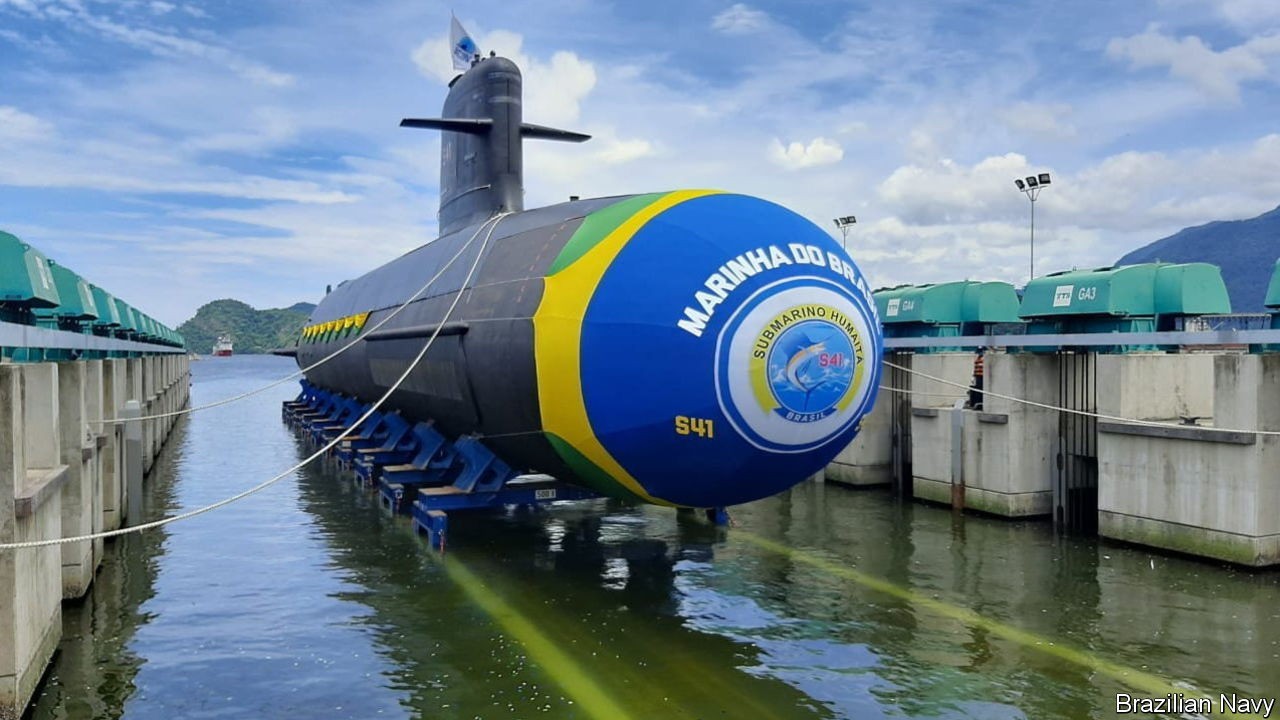RIO DE JANEIRO, BRAZIL – Nuclear submarines gained attention recently when the American newspaper The New York Times revealed that a couple from the United States tried to sell Brazil military secrets about their operation.
Following the release of the news, Folha de S.Paulo stated that one of the topics that Jair Bolsonaro’s government took to Russia during his visit to the country last month was the discussion of cooperation between Brazilians and Russians to advance the national Navy’s program in its project to develop a nuclear submarine.
Since 2009, the Navy has had plans to develop submarines with this technology. Only six countries have military nuclear submarines: Russia, the USA, the UK, France, China, and India. At the end of last year, Australia announced that it had reached an agreement with the Americans and the British to develop its own submarines. Other countries, such as Argentina, have projects in the area, but nothing concrete yet.

A NUCLEAR SUBMARINE IS NOT A NUCLEAR WEAPON
The first confusion one makes when hearing the term “nuclear submarine” is to think that it is a nuclear weapon. Therefore, the best term to use when discussing this vessel is “nuclear-powered submarine”.
In other words, the difference between this type of submarine and an ordinary submarine is only the fuel used to propel it. It has nothing to do with its destructive power.
From the moment scientists discovered that nuclear fission could generate large amounts of energy, they sought to use this technology to generate electricity. That is why there are, for example, nuclear power plants. Even in Brazil, where hydroelectric plants predominate for electricity generation, some plants have a nuclear energy matrix in Angra dos Reis, Rio de Janeiro State.
The same principle applied to energy generation in nuclear power plants is found in these submarines. Like the power plants, they have their own reactors, only smaller.
We need to go back to high school chemistry to understand how they work: Every atom has a nucleus, where protons and neutrons are found. The number of protons in the nucleus defines which chemical element the atom belongs to. Nuclei with the same number of protons but varying neutrons are called isotopes of that element.
Some very heavy nuclei are susceptible to a process called nuclear fission. It splits the nucleus of a heavy chemical element into two lighter elements. What remains of this process is converted into energy – which is released in vast amounts.
For this reason, the nuclear fission process for generating energy has been used in various industries in recent decades. That is even true for the propulsion of a vehicle, such as a submarine.
DIFFERENCE IN SCALE
The element most used in fission is uranium. This natural element, extracted in mining, usually consists of the isotope called uranium-238. In much smaller quantities, the isotope uranium-235 is found.
But for the nuclear reactor to work, the uranium must be enriched to contain a higher proportion of uranium-235. The level of enrichment is a crucial factor for fission to generate a safe amount of energy.
That is the difference between power plants, submarines, and nuclear bombs. An enrichment level of around 3% to 5% is required in power plants. In submarines, the enrichment must be above 20%. And finally, in nuclear weapons, the figure is as high as 80%, as in the case of the bombs dropped on Japan in the Second World War.
Inside the submarine’s nuclear reactor, uranium-235 is bombarded with neutrons, which causes some of the nuclei to undergo nuclear fission. In this process, more neutrons are released, keeping a nuclear chain reaction going.
The energy is released as heat, which can be used to drive turbines that generate enough electricity to keep the submarine moving.
ADVANTAGES AND DISADVANTAGES
The main advantage of the nuclear submarine (or nuclear-powered submarine, to be more exact) is that it does not require refueling. When one of these submarines is commissioned, it has enough uranium fuel to last for more than 30 years.
The efficiency of nuclear power means that these submarines can operate at higher speeds than ordinary submarines. In addition, the nuclear reaction requires no air, unlike traditional fuel, which is very useful for a submarine: it can then spend much longer underwater performing its duties.
On the other hand, nuclear submarines are much more expensive, with the price of each one running into the billions of dollars. Another disadvantage is the need to have a highly trained workforce to build these submarines, and this is where the Brazilian Navy’s plans seem to be stuck.

